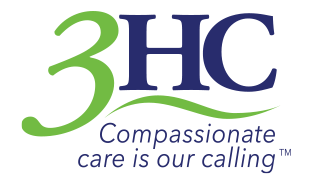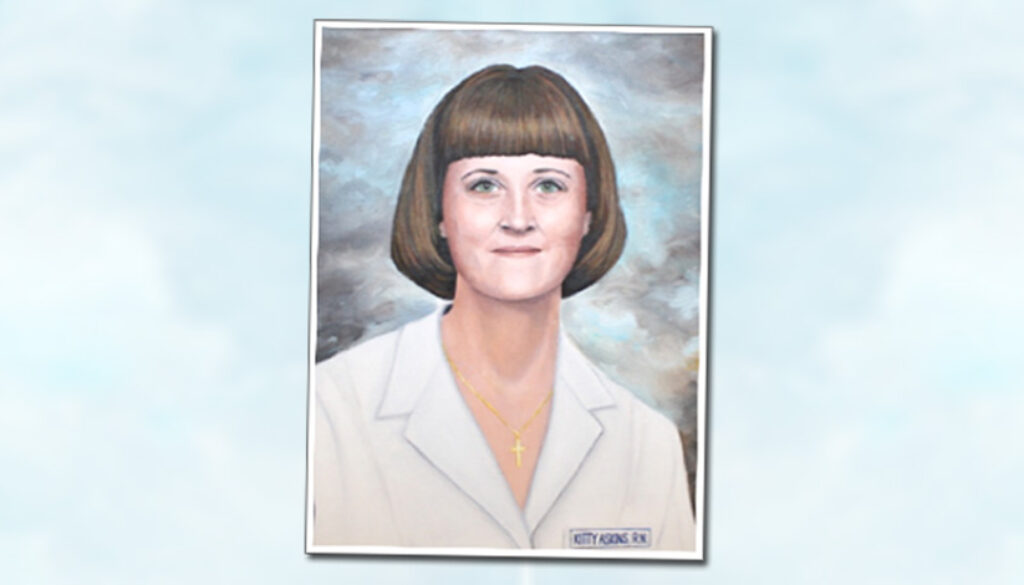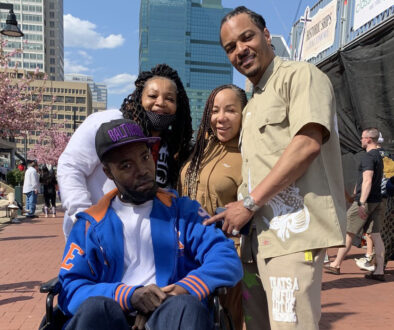The Real Kitty Askins, RN
In Wayne County, the name Kitty Askins has become synonymous with comfort and care for a family’s most prized possession- loved ones on the threshold of their last days.
But few might realize that the person for whom the hospice center on Wayne Memorial Drive was named- lauded for being a local “pioneer” for home health care and hospice- once needed the care herself.
After battling breast cancer that went into remission in the early 1980s, things were looking up for the traveling nurse, until the cancer returned.
“She just kept going. You never knew she was in any pain,” friend Martha Bryan recalls. “I am not so sure she would have let somebody come in. She always wanted to be giving.”
Kitty worked as long as she was able, but died in 1984. She was 33.
The question of “Who was Kitty Askins?” always brings a smile to husband Richard Askins’ face, he says.
“People are curious what you have to do to have a building named for you,” he said. “The truth is, she was just about the most normal person I have known- she loved her husband, her kids, her church and even her cat that did absolutely nothing to deserve being loved.”
“But maybe that is the point. There are some people who can give without receiving. Are they extraordinary people, or regular folks, who accept our human responsibility to look after each other?”
Kitty had a “double dose” of empathy and patience, Askins said, and understood in her abbreviated life that the material world does not define one’s existence.
She grew up in a community in southern Florida not unlike Goldsboro, he said, during the 1950s, an era when small-town values were still intact.
Her journey from Florida to North Carolina was more than 900 miles, when the 18-year-old left home to attend a small nursing school in the state where her family vacationed when she was a child.
She met her husband through her roommate, who was from Goldsboro, while she was attending Watts School of Nursing in Durham. The two married in 1971 and had two sons- Jamie, now 37, and an assistant district attorney in Jacksonville, married with two young sons; and Jason, 34, married and living in Mill Valley, Calif.
“We moved to Goldsboro in 1977,” Richard said. “She had been a home health nurse in Johnston County. At that time, the idea of a home health nurse was new, some counties had it, some didn’t.
“When we moved to Goldsboro, she wanted a job that would allow a little bit of flex-time. That was kind of a new idea back then, too.”
Askins remembers his wife approached a group of Mount Olive doctors who seemed interested in the concept.
“It was really difficult for the older patients to get out and come to the doctors,” he said. “They heard about this idea, decided to try it, (to) have a nurse on staff to go out to patients and make sure they were doing what they were supposed to do.”
Dr. Robert Shackelford of Mount Olive was one of those doctors, along with Dr. Hervy Kornegay.
“Greene County opened a home health service, and Kitty Askins was working for them,” Shackelford said. “We used their services for a good while and there were not any home health services operating in Wayne County at that time.
“Dr. Kornegay and I got together, and we made an application for a certificate of need and created what was then called Mount Olive Home Health Care. That was the origin of it, and it got real busy, and we expanded in a number of ways…eventually moved to Goldsboro and became Home Health and Hospice.”
Kitty’s role was essential to make house calls, which meant she was mostly traveling from place to place, Askins said.
Good thing, since her office at the time was a closet in a rest home, he said.
The notion of home health, and especially hospice, was still novel, being developed as time went along, Askins said.
“There were other services that were needed for patients, primarily older patients,” he said. “They hired a physical therapist (Marti Saylors) and then they hired a social worker, and it just sort of exploded…
“Since those patients unfortunately were in kind of a last stage of their life, Kitty had to start doing hospice care without anybody knowing what it was. They were more concerned with comfort than cure.”
The role was one she tackled with passion.
“She was basically the first hospice nurse in Wayne County,” said Mrs. Bryan, who had grown up with Richard and attended the same church. “If she would get a call at 3 o’clock in the morning, she was gone.”
Sometimes, when their sons were small, Askins said his wife wouldn’t even wait for him to get home from work before setting out.
“She would drag her two young sons with her to meet patients on emergency visits,” he said. “Some people remember that about her, showing up with a little nurse’s bag and these two little snotty-nosed kids. Sometimes I think she did it on purpose for certain families.
“I would come home, it’d be me and the dog- ‘Where are the kids, where is she?”
In retrospect, he said it was probably a good thing for his children to experience, seeing firsthand that there were people who were not as fortunate and the importance of caring for others.
“I could claim that she was showing off the smartest and cutest kids in America, but I know that was not her attitude,” Askins said. “She understood that her personal bond with her patients was strengthened by the patient seeing that she was ordinary with kids that sometimes were not angels in their behavior…For her, the patient needed her, so she went.”
One of the most important things he would like others to know is who Kitty Askins was as a person. Like the fact that at 27 years old, she was Sunday school director at their church, First Baptist in Goldsboro.
“As a hospice nurse, it’s a real fine line between being an overbearing Christian,” he said. “Her success, and the reason the patients loved, her was that she was a Christian without being a loud Christian.
“She had this spirituality about her that you didn’t know that she was a Baptist or whatever. That was kind of her way- there’s something spiritual there without being an evangelist- with that calmness that she had, because she was pretty balanced spiritually. That’s what her patients could pick up. It’s kind of an internal peace.”
Friends also recall her with fondness.
“Those of us who are named Kitty are a small minority,” said Kitty Sauls with a smile. “I remember seeing her at the Flying Needle, she did a lot of needlecraft, and remember her from swim team, one or two of the boys were on swim team.”
“She was a fun-loving, very good Christian woman,” Mrs. Bryan said.
She was also gentle and compassionate and devoted to her church and children, the women said.
“She and Marti introduced a lot of things to this community, with the physical therapy and Lamaze,” Mrs. Sauls said.
Kitty also avidly recruited nurses to do what she was doing.
“She was the very first home health hospice nurse (here) even though I’m not sure it was called that at the time,” Mrs. Bryan said. “She was just the nurse that went into the homes of cancer patients.”
The rewarding career was cut short, though, when Kitty was diagnosed with breast cancer. The odds of survival in the early ‘80s were drastically lower then, Askins said.
“Kitty had an aggressive cancer- it went and came back several times- it was about a three-year process,” he said. “Those same people that she had helped train on how to deal with the older patients in their latent stage of life, they had to now turn around and give that same care to her.
“She (worked) as long as she physically could. But given the nature of the cancer she had (and the technology then) the chemo was different than it is today.”
The last two months of her life, she was especially sick, Askins said.
Mrs. Bryan said she and Mrs. Saylors were with their friend when she passed.
“She definitely died with dignity,” Mrs. Bryan said. “That’s what she tried to do by going to visit (as a nurse), so the patients wouldn’t have to leave their homes to go to the doctor if there were things that she could do to prevent that.”
Several impressions about that time still remain, Askins said, among them how stunned he and his boys- ages 10 and 7 at the time- were by the turnout for the funeral, much like the spirit of giving his wife had embodied.
“The second image occurred a few days after Kitty’s death,” he said. “The kids that morning got up and got dressed to go to school. They thought that they should go to school, and I would pick them up later.
“That was so Kitty-like- you just lick your wounds and go on. They knew from her that if you had things to do, you do them.”
During the years since, hospice has gained even more prominence.
He said he was approached by a group interested in establishing a residential facility home in the community.
“They thought it really needed to have an individual name instead of an institutional name,” he said. “Some of the people that were on the Home Health and Hospice board were those same doctors that started the home health 10 or 15 years earlier.”
Askins said he doesn’t know exactly who to credit with honoring his wife’s memory, but was humbled by the gesture.
“It’s not a clinic. It’s a place where people in the worst of times have good experiences,” he said. “They’re peaceful, good family experiences.
“I feel very proud of it. The part I’m proud about is, it’s been true to what it intended to do. It would have been real easy for that organization to become a big bureaucracy and begin to lose the personal side of it, and they haven’t. They have managed to get really good, loving people to do the care there.”
There is definitely a sense of pride having the Askins name attached to the center, constructed in 1995 and now doubling in size through expansion efforts.
But also, because the namesake is a haven, he said, a “sort” of serene quiet place for people at the end of life.”
“I have never heard anything negative about the kind of care they give,” he said. “They just somehow managed to get quality people to do the service.”
Askins might have lost his first mate- he has since remarried; wife Gail is a librarian at Wayne County Public Library- but the reminders of Kitty live on. “Many people, over the years when they hear my name, eagerly want to tell me of the positive experience for their families when grandma (or whoever) was at Kitty Askins,” he said. “The real satisfaction to me is that in the building people are caring for one another. In there are no games, designer jeans or hidden agendas.”
It calls to mind one of his favorite sayings, which especially helped him through some of the hard times- “I like me better because I treated you well.”
“It’s almost the Golden Rule, but more about the reward of doing right, instead of a command,” he explained. “The volunteers and employees of the center accept that we should look after one another, even though they continuously lose new friends (patients).”
Like many other families who have come to realize that, in death, as in life, one’s true legacy can live on long afterward, Askins said the same holds true for the once-held small-town values his first wife represented.
“I am proclaiming that ‘it’ still exists but you have to look for it,” he said. “Go out Wayne Memorial Drive to the building with Kitty’s name on the door and watch what goes on there every day. It is ordinary people looking after one another…
“Kitty’s story has no ending. It’s now just different people continuing the work.”
Story by Phyllis Moore, Goldsboro News Argus. Re-printed with permission from the Goldsboro News Argus.





